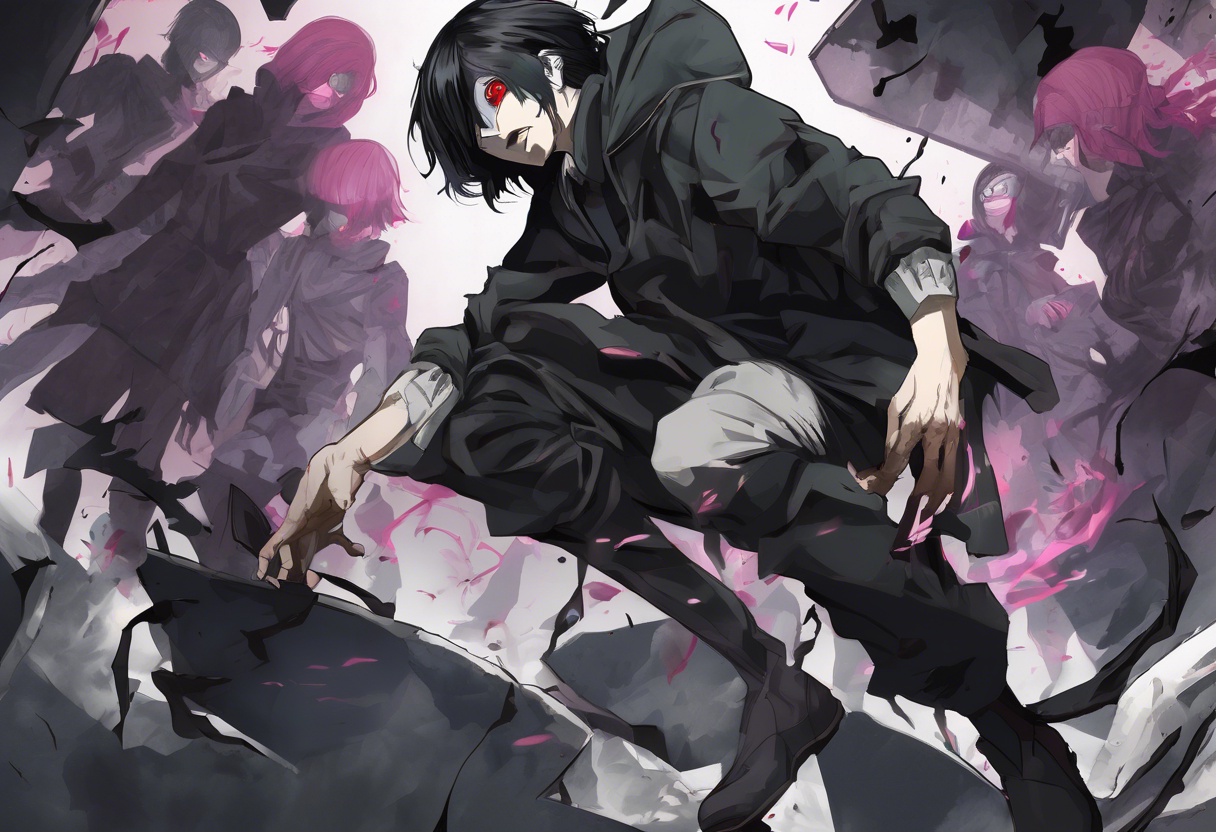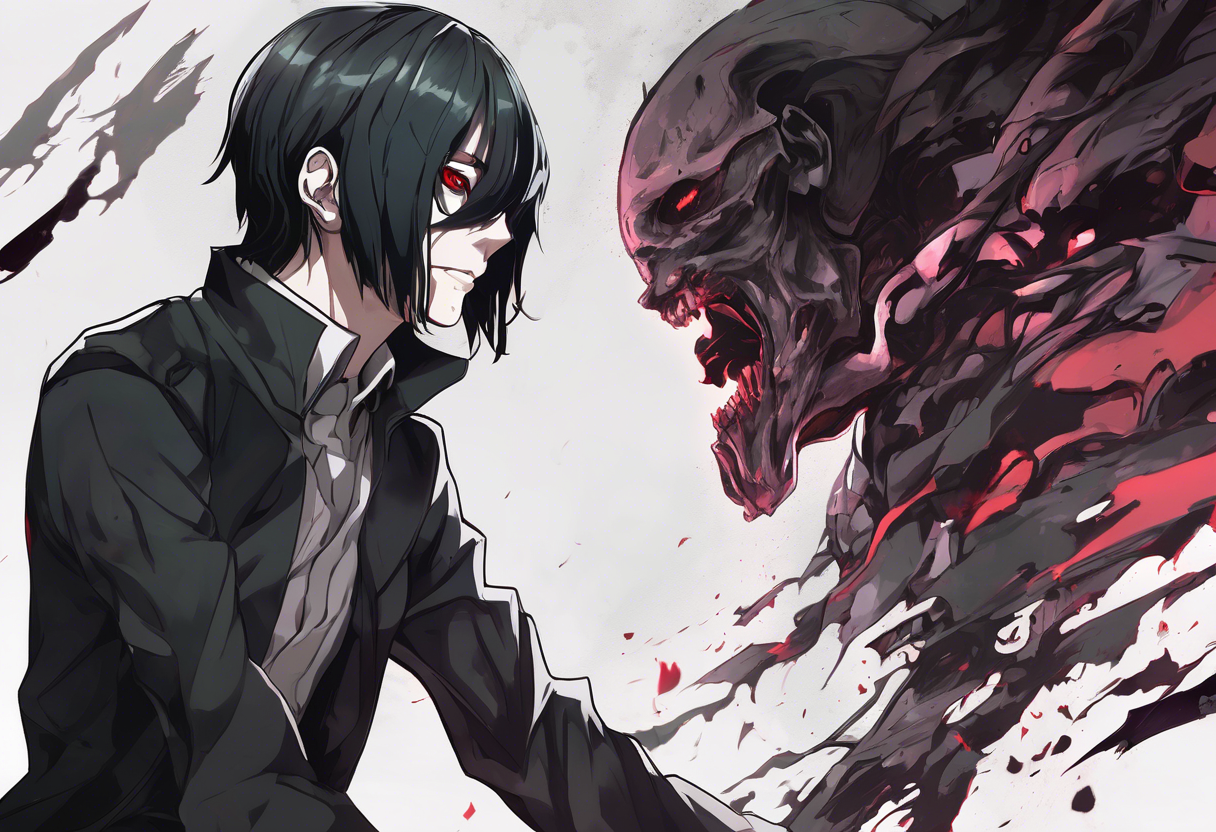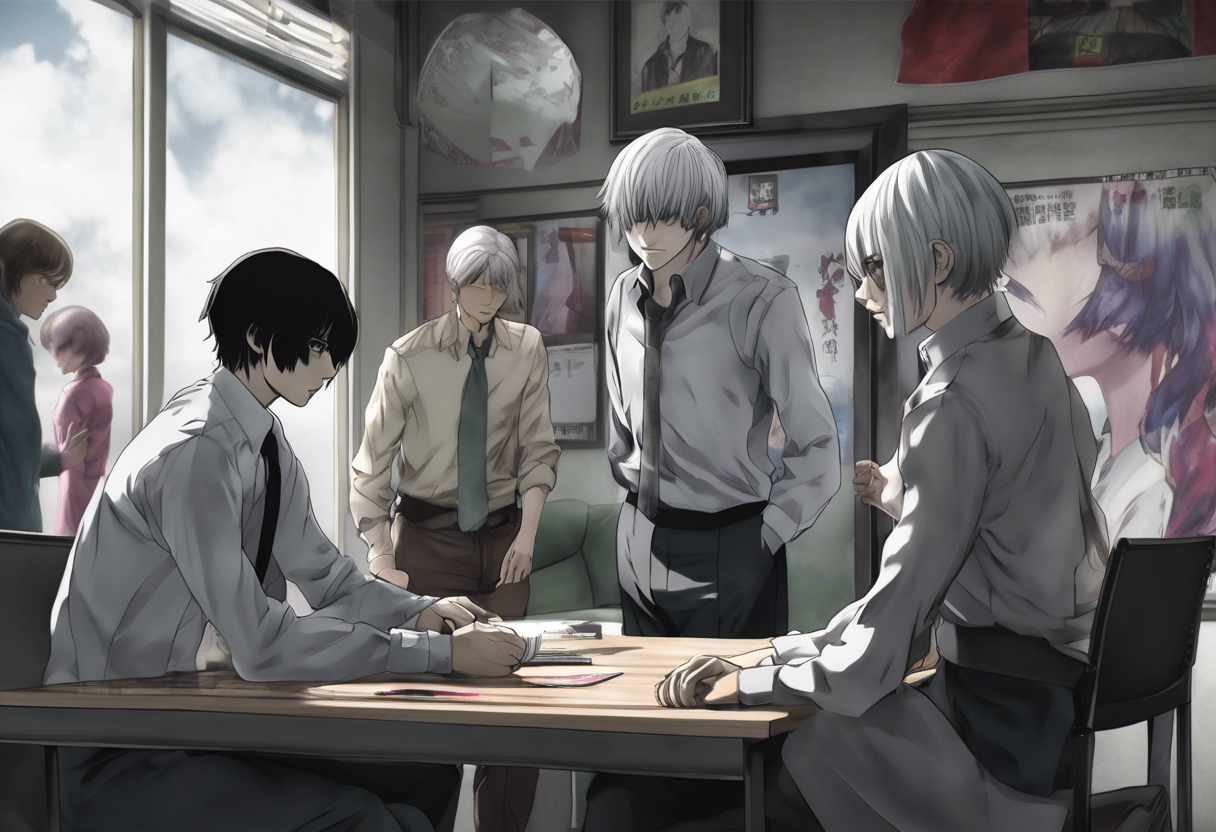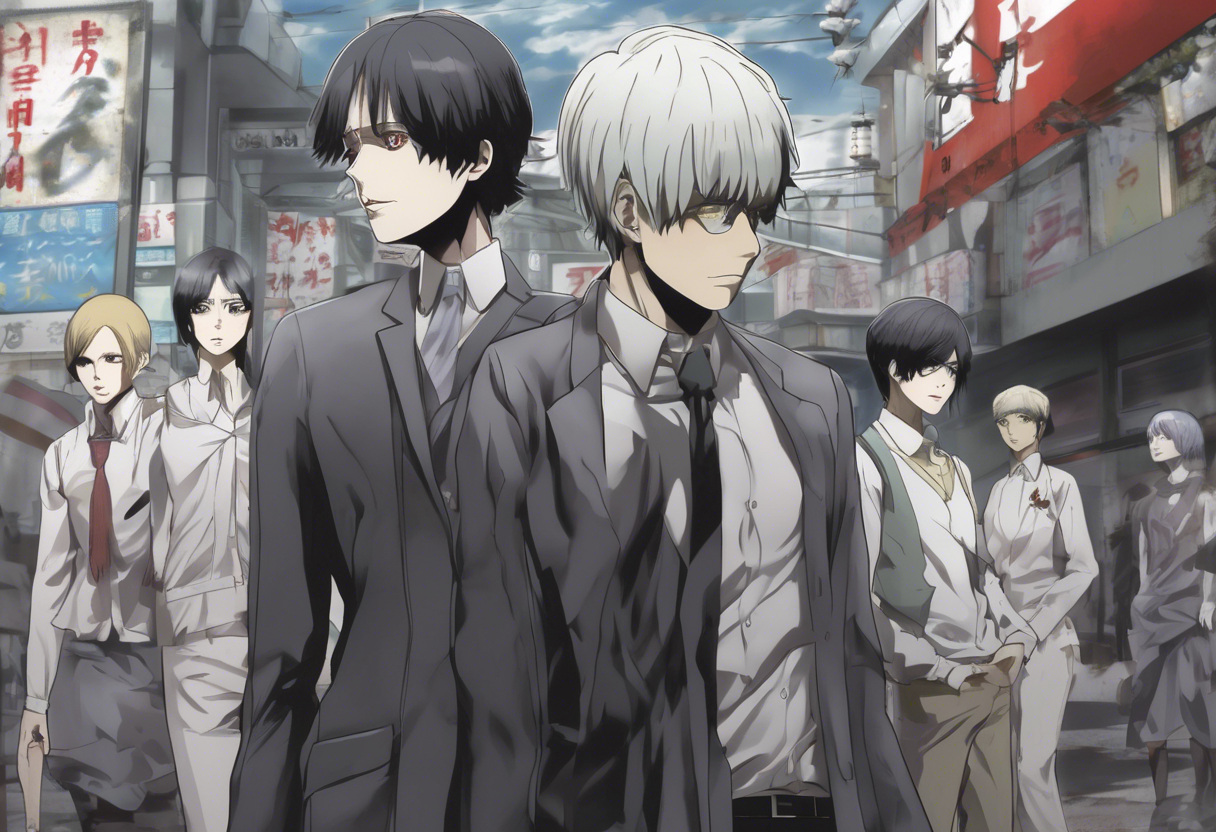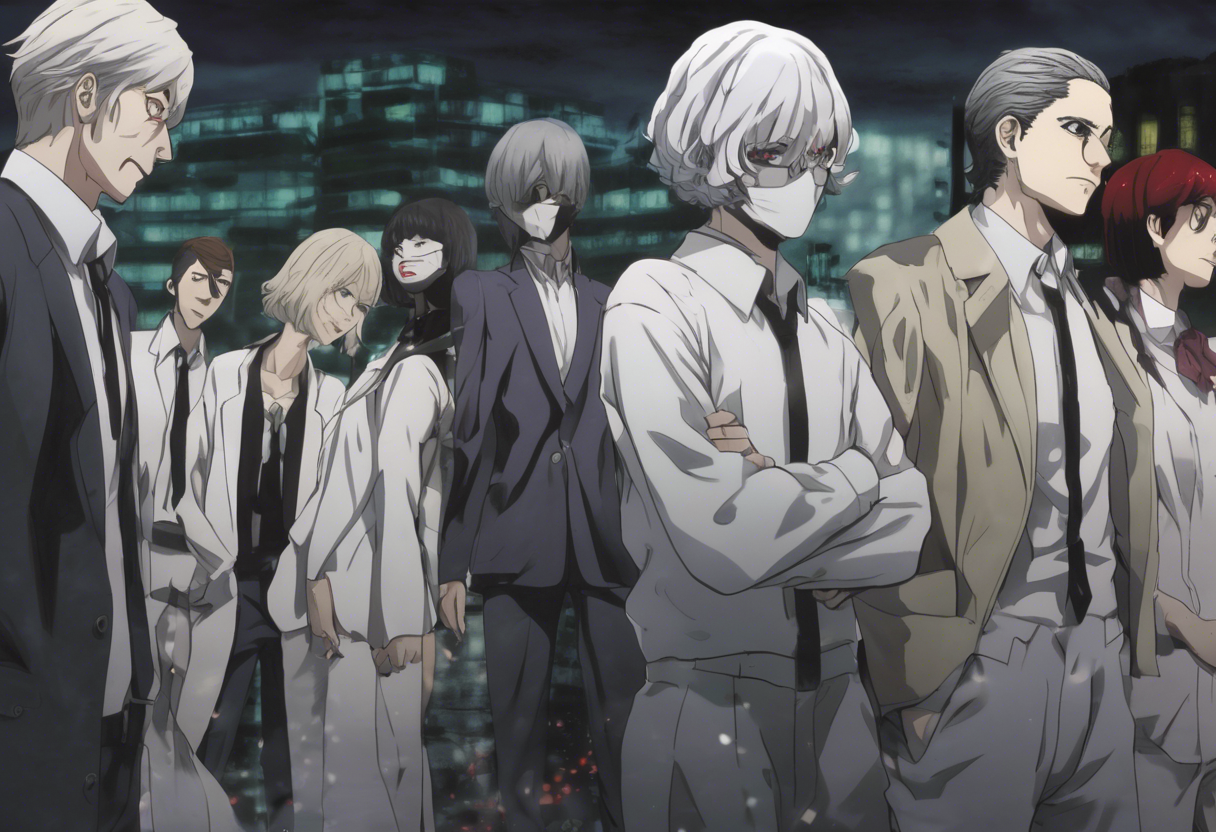Contents
Tokyo Ghoul:re – Episode 32: TAKE: One Who Writhes
Introduction
Tokyo Ghoul:re – Episode 32, titled "TAKE: One Who Writhes," is a pivotal installment in the anime series adapted from Sui Ishida’s manga of the same name. This episode, directed by Taiji Kawanishi and aired on May 22, 2018, is part of the second season of Tokyo Ghoul:re, which continues the complex and dark narrative of the Tokyo Ghoul universe. The series is produced by Pierrot, with Ken Hagino serving as the producer, and it stands out in its genre for its deep exploration of themes such as identity, morality, and the struggle between humans and ghouls.
Plot Summary
In "TAKE: One Who Writhes," the narrative delves into several interconnected storylines that highlight the escalating tensions and conflicts within the world of Tokyo Ghoul. The episode begins with Ken Kaneki, now known as Haise Sasaki, who is still grappling with his dual identity and the memories of his past life. Sasaki’s search for answers about his true self is intensified as he suffers hallucinations of Yoshimura and Anteiku, symbols of his former life and connections.
Meanwhile, Shuu Tsukiyama’s condition worsens significantly as he struggles with an insatiable hunger and a lack of control over his kagune, the physical manifestation of a ghoul’s powers. Tsukiyama’s desperation leads him to devise a plan to restore Kaneki’s memories, believing that Kaneki/Sasaki holds the key to his own salvation. To achieve this, Tsukiyama orchestrates a series of events, including bribing Aogiri members to attack the Quinx Squad, in an attempt to isolate Sasaki and trigger his memories.
The Quinx Squad, comprising Sasaki, Shirazu, Mutsuki, and Saiko, is tasked with preparing for the Rose Investigation, a mission aimed at infiltrating and gathering intelligence on the Rose gang. However, their plans are complicated by Kori Ui’s rejection of the mission and the revelation that Sasaki is a ghoul, which adds to the internal conflicts within the squad.
The episode also explores the aftermath of Kijima’s brutal video, which has gone viral and provoked the Rose gang to seek revenge. This sets the stage for a series of violent confrontations, including an accidental attack on Sasaki by Yamori’s old gang. During this chaos, Mutsuki battles Torso but is attacked by the ghoul known as Grave Robber, while Sasaki kills his attackers using his kagune. Saiko is nearly killed but is saved by Amon Kotaru, who is revealed to be alive, and the entire scene is observed by Eto.
Tatara and Ayato Kirishima’s argument over rescuing Hinami Fueguchi from Cochlea adds another layer of tension, highlighting the moral dilemmas and conflicting loyalties that characters face. The episode culminates with Sasaki’s continued struggle to reconcile his identities and the escalating violence that surrounds him, setting the stage for further conflicts and revelations in subsequent episodes.
Themes and Symbolism
"TAKE: One Who Writhes" is rich in themes and symbolic elements that are central to the Tokyo Ghoul narrative. One of the primary themes is the struggle with identity, particularly through Sasaki’s character. His hallucinations and internal conflicts symbolize the fragmentation of his identity and the ongoing battle between his human and ghoul selves. This theme is further underscored by Tsukiyama’s condition, which serves as a metaphor for the uncontrolled and primal aspects of ghoul nature.
The episode also explores the theme of morality and the gray areas between right and wrong. The Quinx Squad’s mission and the ethical dilemmas they face highlight the complexities of operating in a world where the lines between humans and ghouls are increasingly blurred. The character of Kori Ui, who rejects the mission due to Sasaki’s ghoul nature, represents a more rigid moral stance, while Sasaki’s actions embody a more nuanced and empathetic approach.
Symbolism is prevalent in the use of characters like Yoshimura and Anteiku, who appear in Sasaki’s hallucinations. These characters symbolize Sasaki’s past and his connections to the ghoul community, serving as a reminder of his roots and the life he left behind.
Cultural Impact
"TAKE: One Who Writhes" has had a significant cultural impact, particularly within the anime and manga communities. The episode’s release was highly anticipated and received substantial attention due to its dramatic plot twists and character developments. The viral video plotline and the subsequent violence it provokes reflect real-world issues such as the spread of misinformation and the consequences of public outrage.
The episode has also influenced other media, with its themes and characters being referenced in various forms of fan art, cosplay, and fan fiction. The complex moralities and the struggle for identity presented in this episode have resonated with audiences, making it a memorable and impactful part of the Tokyo Ghoul series.
Critical Reception
Upon its release, "TAKE: One Who Writhes" received mixed reviews from critics and audiences. Some praised the episode for its intense action sequences, emotional depth, and the progression of the plot. However, others criticized the pacing and the handling of certain character arcs, feeling that some developments were rushed or underexplained.
Despite these criticisms, the episode has been recognized for its contribution to the overall narrative of Tokyo Ghoul:re, particularly in how it sets up future conflicts and character revelations. The episode’s themes and symbolism have been widely discussed, with many appreciating the depth and complexity brought to the series.
Legacy
"TAKE: One Who Writhes" continues to be an important part of the Tokyo Ghoul series, influencing both the anime and manga communities. The episode’s exploration of identity, morality, and the human-ghoul conflict has inspired numerous discussions and analyses. It remains a pivotal moment in the series, marking a significant turning point in the characters’ journeys and the overall narrative arc.
The episode’s impact on filmmakers and artists is evident in the way it has been referenced and homaged in other works. Its themes of identity and morality continue to resonate with audiences, making it a lasting contribution to the world of anime and beyond.


